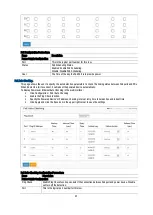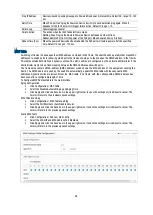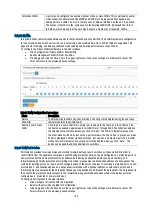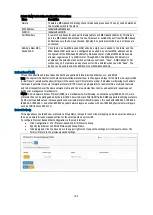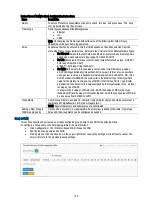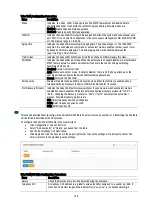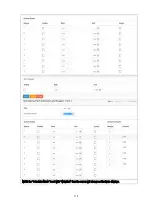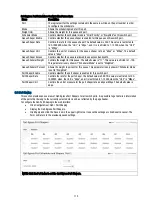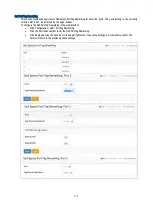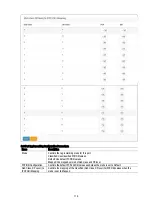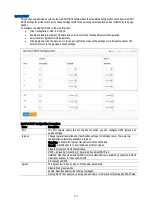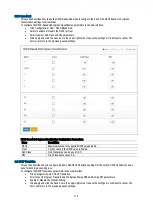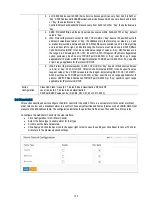
110
CoS
Controls the default class of service. All frames are classified to a CoS. There is a one to one mapping
between CoS, queue and priority. A CoS of 0 (zero) has the lowest priority. If the port is VLAN aware, the
frame is tagged and Tag Class is enabled, then the frame is classified to a CoS that is mapped from the
PCP and DEI value in the tag. Otherwise the frame is classified to the default CoS. The classified CoS can
be overruled by a QCL entry.
NOTE: If the default CoS has been dynamically changed, then the actual default CoS is shown in
parentheses after the configured default CoS.
DPL
Controls the default drop precedence level. All frames are classified to a drop precedence level. If the port
is VLAN aware, the frame is tagged and Tag Class is enabled, then the frame is classified to a DPL that
is mapped from the PCP and DEI value in the tag. Otherwise the frame is classified to the default DPL.
The classified DPL can be overruled by a QCL entry.
PCP
Controls the default PCP value. All frames are classified to a PCP value. If the port is VLAN aware and the
frame is tagged, then the frame is classified to the PCP value in the tag. Otherwise the frame is
classified to the default PCP value.
DEI
Controls the default DEI value. All frames are classified to a DEI value. If the port is VLAN aware and the
frame is tagged, then the frame is classified to the DEI value in the tag. Otherwise the frame is
classified to the default DEI value.
Tag Class
Shows the classification mode for tagged frames on this port. Disabled: Use default QoS class and DP
level for tagged frames. Enabled: Use mapped versions of PCP and DEI for tagged frames. Click on the
mode in order to configure the mode and/or mapping.
NOTE: This setting has no effect if the port is VLAN unaware. Tagged frames received on VLAN
unaware ports are always classified to the default CoS and DPL.
DSCP
Click to Enable DSCP based QoS Ingress Port Classification.
Address
mode
The IP/MAC address mode specifying whether the QCL classification must be based on source
(SMAC/SIP) or destination (DMAC/DIP) addresses on this port. The allowed values are:
Source: Enable SMAC/SIP matching. Destination: Enable DMAC/DIP matching.
QoS Port Policing
This section provides an overview of QoS Ingress Port Policers for all switch ports. The Port Policing is useful in
constraining traffic flows and marking frames above specific rates. Policing is primarily useful for data flows and voice or
video flows because voice and video usually maintains a steady rate of traffic.
To configure the QoS Port Schedulers in the web interface:
Click Configuration / QoS / Port Policing
Select which ports need to be enabled for the QoS Ingress Port Policers and enter the Rate Limit Condition.
Scroll to select the Rate limit Unit with kbps, Mbps, fps and kfps.
Click Apply and click the Save icon in the upper right corner to save the settings or click Reset to cancel. The
Form will return to the previously saved settings.


